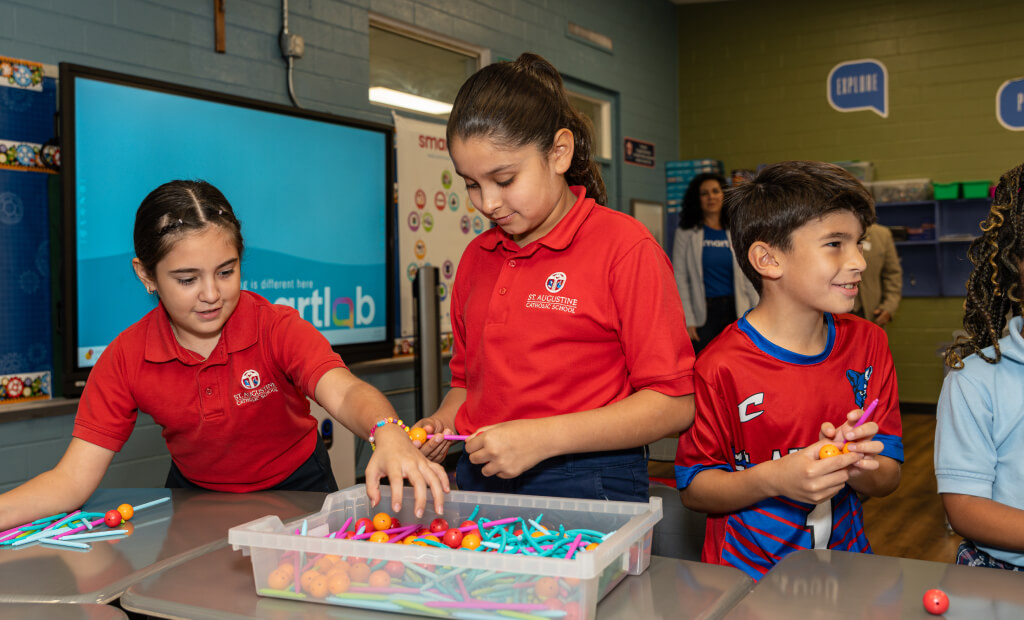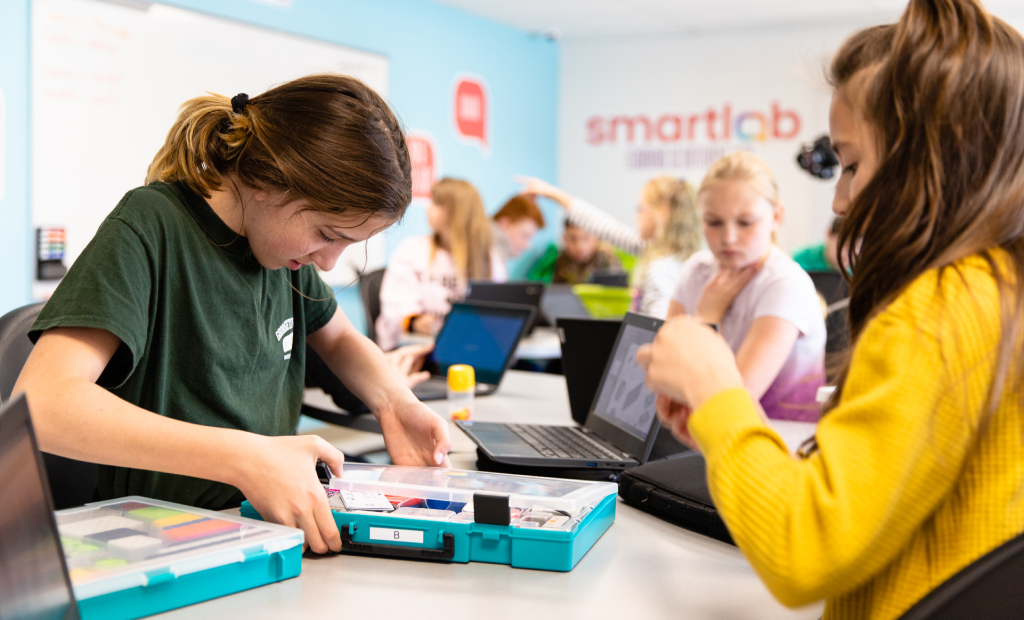How STEM Education Helps Build Financial Literacy Skills
To a kid, the concept of finances can seem like such an abstract,adult thing. Only adults worry about budgeting, prioritizing spending, and investing—right? The truth is, no matter your age, financial choices shape everything from your daily routines to your lifelong goals.
Most children first encounter financial concepts through encounters like allowances and lemonade stands. They experience the satisfaction of earning and spending their own money and may begin to understand the value of saving for something they really want. Yet, too often, formal financial education starts too late, well after habits and attitudes about spending and saving have already formed.
Understanding money is essential for financial security in adulthood. When children are introduced to financial concepts early, they begin to see money not as a mystery, but as a tool they can learn to manage. Early exposure builds a foundation for responsible decision-making, confidence, and the ability to plan ahead—all skills that support success in school and beyond.
So how can educators incorporate this all-important skill into STEM lessons, especially when there are standards to meet?
Where Financial Literacy Meets STEM Education
STEM and financial literacy may seem unrelated, but they share a strong connection. Both involve problem-solving and critical thinking, and both have everyday applications. When students engage with STEM subjects (science, technology, engineering, math) they’re often working with data, analyzing outcomes, and making decisions based on logic. Those are the same cognitive tools they need to make sense of budgeting, saving, and spending their money.
At younger ages, financial literacy becomes more meaningful when it’s woven into hands-on STEM projects. For example, students designing their own products might calculate the cost of materials, consider pricing models, and evaluate the return on their investment. These aren’t abstract lessons, but real-life scenarios that give students a tangible way to understand the value of money and the consequences of financial choices.
Project-based learning plays a key role here. It shifts the focus from memorizing facts to exploring how math, technology, engineering, and systems thinking apply to everyday life. A fun STEM activity can become a chance to talk about earning and managing money, setting goals, and planning ahead—all skills learners can use well beyond the classroom.
Benefits of Early Financial Education
Introducing financial concepts during the elementary and middle school years helps kids develop habits and skills that can serve them throughout their lives. By incorporating financial literacy into STEM learning, students can understand money in a context where they can apply their decision-making and problem-solving skills.
Engaging with financial concepts early can help learners develop:
- Stronger critical thinking skills: Students learn to evaluate options, predict outcomes, and consider consequences before making choices.
- Increased confidence in real-world decision-making: Financial concepts like saving, spending, and budgeting help kids feel more prepared to manage resources in everyday life.
- Improved math fluency through application: Real-world tasks like budgeting, comparing prices, and tracking expenses give math a meaningful context.
- Greater awareness of value and tradeoffs: Hands-on STEM projects tied to financial literacy reinforce how to prioritize and plan with limited resources.
When science or engineering activities involve money-related decisions, students gain a deeper understanding of multiple subjects and develop skills that apply to any career path.

Implementing Financial Literacy in STEM Education
Teaching financial literacy is most successful when woven into hands-on, problem-solving projects students already love—no separate curriculum required! Through purposeful design challenges, students can explore core financial principles as part of an engaging learning process.
SmartLab environments make this integration intuitive. Educators and facilitators can use pre-built activities or customize their own to include financial goals and constraints, turning traditional STEM lessons into opportunities for students to be responsible decision-makers.
Here are just a few ways financial literacy can show up in STEM-focused classrooms:
- Design challenges with limited budgets: Students build a working prototype of a product or structure, with restrictions on materials and costs. They must figure out how to create a successful end product, even if that means sacrificing some higher-priced materials to stay under budget.
- Energy-efficiency comparisons: Given a set budget, learners test different lighting or insulation materials to determine which are both effective and cost-conscious.
- Business-oriented projects: Students simulate launching a service or small business, tracking expenses, revenue, and profit. Introducing the concept of investors can encourage students to think more economically about their overhead costs.
- Smart consumer simulations: Projects focused on comparing tools, materials, or services teach students to evaluate quality and value, not just price.
These are just a few examples of connecting financial concepts to engaging, real-world challenges, where students can begin to see money as an opportunity for thoughtful planning, not just a means to an end.
Practical Tips for Parents and Educators
Financial literacy starts with everyday conversations. When children are invited to think about money as part of real-life decision-making, either at home or in the classroom, they begin to develop a stronger understanding of value, trade-offs, and planning.
Here are a few practical ways for both teachers and caregivers to foster financial awareness:
- Talk openly about budgeting and spending: Let kids see how you make choices between needs and wants, compare prices, or save for future goals. These small moments build lasting awareness.
- Involve students in classroom or household purchases: Ask for their input when planning a class project or shopping for groceries. Assigning a budget and working together to stay within it builds responsibility and basic math skills.
- Use interactive tools and age-appropriate apps. Simulations, games, and financial planning apps help learners visualize concepts like saving, spending, investing, or earning interest in a way that feels engaging rather than abstract.
- Link money decisions to STEM activities: A project that involves designing or building something can also include tracking material costs or calculating labor time. This adds a meaningful layer of context to STEM subjects.
The key is to treat money like a tool for curiosity and conversation rather than a reward or source of stress. In this way, parents and educators can help kids grow into confident, capable thinkers ready for independence.
Let’s Get Financially Literate!
Helping kids develop financial literacy early sets the stage for lifelong confidence with money. When financial concepts are woven into STEM learning, they become more tangible and relevant; it’s less about memorizing numbers and more about solving problems, making plans, and thinking critically.
Integrated learning ecosystemslike SmartLab support this approach by combining hands-on projects with real-world applications. While learning how to code or calculate, learners see how those skills can apply to goal-setting and decision-making.
Curious how it all comes together? Explore SmartLab environments or schedule a visit to see how a SmartLab near you brings financial education to life.
Frequently Asked Questions
At what age should kids start learning about money?
Kids can begin learning basic financial concepts like saving and spending as early as preschool. As they grow, more complex topics like budgeting, saving, earning, and investing can be introduced through age-appropriate activities.
How can parents and teachers make financial literacy engaging for young learners?
Use hands-on, real-life experiences to make financial concepts meaningful and fun—like planning a classroom event, managing a small allowance, or running a lemonade stand.
What role does STEM education play in teaching financial skills?
STEM projects help kids apply math and critical thinking to real-world scenarios, including money management, resource allocation, and cost analysis. This kind of integrated approach deepens understanding and boosts retention.



